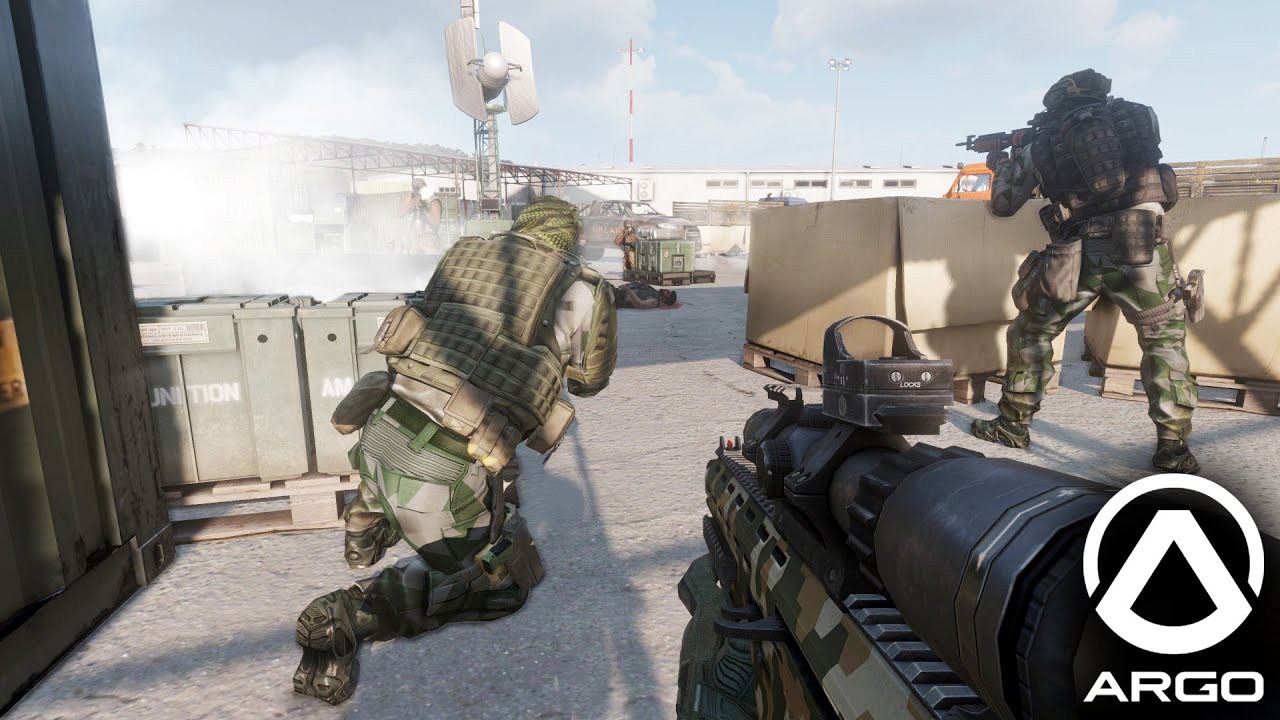Terrain as a Weapon – Environmental Complexity and Tactical Exploitation
Argo's use of its primary battlefield—the fictional island of Malden—is a masterclass in level design that profoundly impacts every aspect of gameplay. Unlike generic, symmetrical maps that dominate many competitive shooters, Malden’s varied geography introduces a dynamic element of realism and strategy that transforms each match into a spatial chess match. The island features a wide variety of biomes: arid highlands, coastal towns, rocky outcrops, forests, and industrial zones, each with distinctive layouts and strategic opportunities. These environments are not just visually distinct—they are intricately designed to challenge and reward players who take the time to study their nuances. Hills and elevated terrains provide natural sniper nests and overwatch points, allowing Marksmen to dominate open areas if left unchecked. Conversely, valleys and canyons serve as kill zones and ambush traps, especially when teams fail to scout properly or underestimate line-of-sight limitations. The sheer verticality in certain areas forces players to consider elevation in all engagements; a firefight is never simply left or right, but often above or below. Understanding and utilizing terrain effectively becomes just as vital as mastering one’s weapon.

Urban areas on Malden present an entirely different strategic rhythm. Dense buildings, alleyways, and tightly packed interiors shift the game's tempo to aggressive room-clearing tactics and close-quarters engagements. In these zones, movement must be calculated and deliberate—each doorway could hide an enemy, and each window could be a sniper’s line of sight. Smoke grenades become essential to obscure vision, and flashbangs or explosives often precede entries. Squad coordination is tested heavily in urban environments, as teammates must cover multiple angles and communicate threats rapidly to avoid being picked off piecemeal. These cityscapes create opportunities for flanking, baiting, and vertical infiltration through rooftops or multi-level structures. Then, there are semi-rural zones that blend open fields with sparse cover and isolated compounds—zones that challenge players to traverse danger zones under potential fire while utilizing the few available structures for brief safety. These hybrid zones demand both long-range engagement precision and the sudden adaptability to fight in cramped buildings. Mastery of each map involves knowing every elevation advantage, choke point, blind corner, and cover route. Teams that make map control a priority often find themselves dictating engagements, forcing the opposition into unfavorable terrain.

 100
Play
100
Play
What makes Malden particularly unique in Argo’s framework is how its map design promotes emergent gameplay—unexpected strategies born from environmental creativity. Players regularly find new flanking routes, improvised sniper nests, or unorthodox traversal paths that alter common tactical flows. The terrain isn't just a background; it’s a living puzzle that players must solve, reinterpret, and dominate with each match. For example, a squad might use the shadows cast by buildings at dawn to mask movement, or wait for the sun’s glare to obscure their advance from enemy snipers. Rocks and bushes, while small details in many games, provide critical concealment for stealth plays. Even audio cues change with environment—footsteps echo differently on metal catwalks versus grassy fields, allowing savvy players to gauge enemy position by sound alone. The best teams use Malden not just as a setting but as a strategic tool, integrating terrain into every plan. They memorize sniper sightlines, know the fastest covered routes between objectives, and set traps based on common movement habits. In Argo, control of the map often leads to control of the match—not through brute force, but through superior environmental intelligence. The island of Malden is more than a battlefield; it’s a silent, ever-present participant in every firefight, rewarding those who treat it with the respect and awareness it demands.


